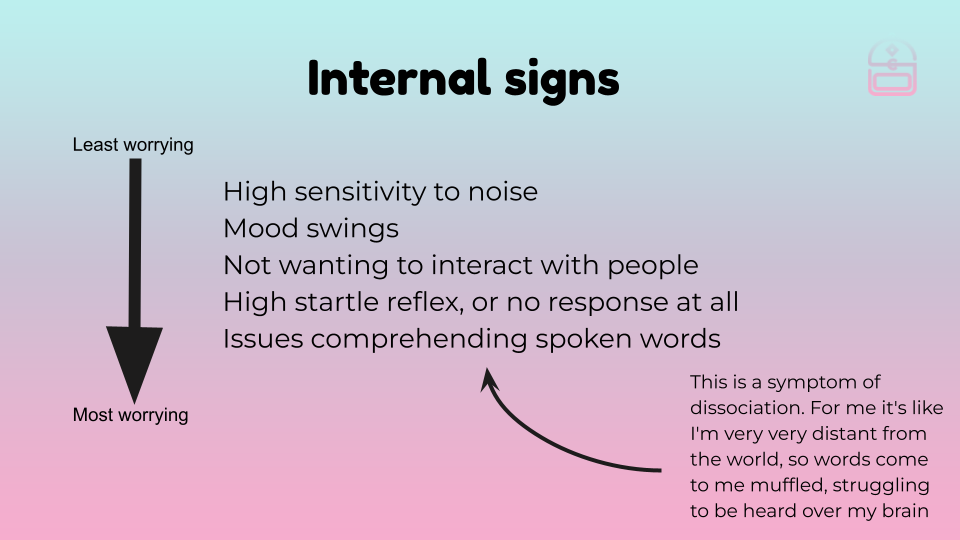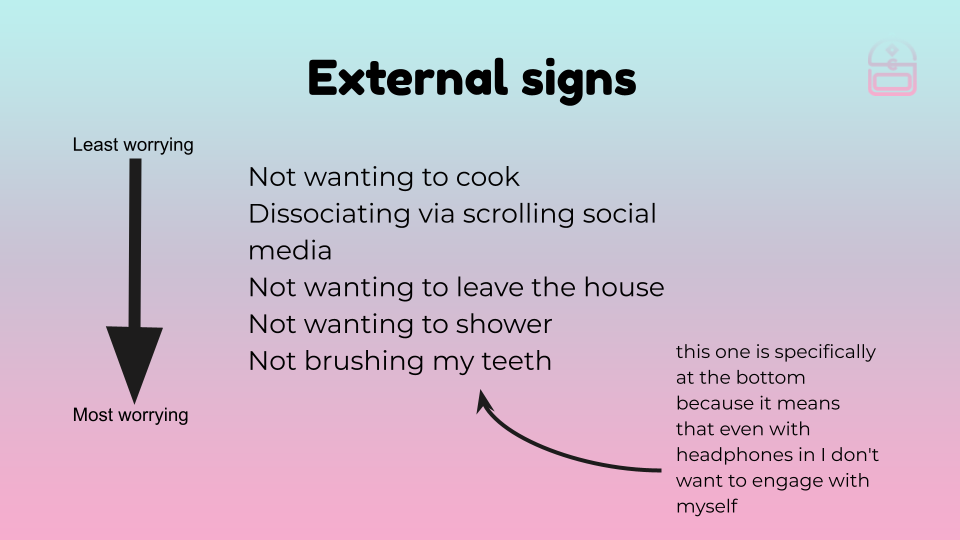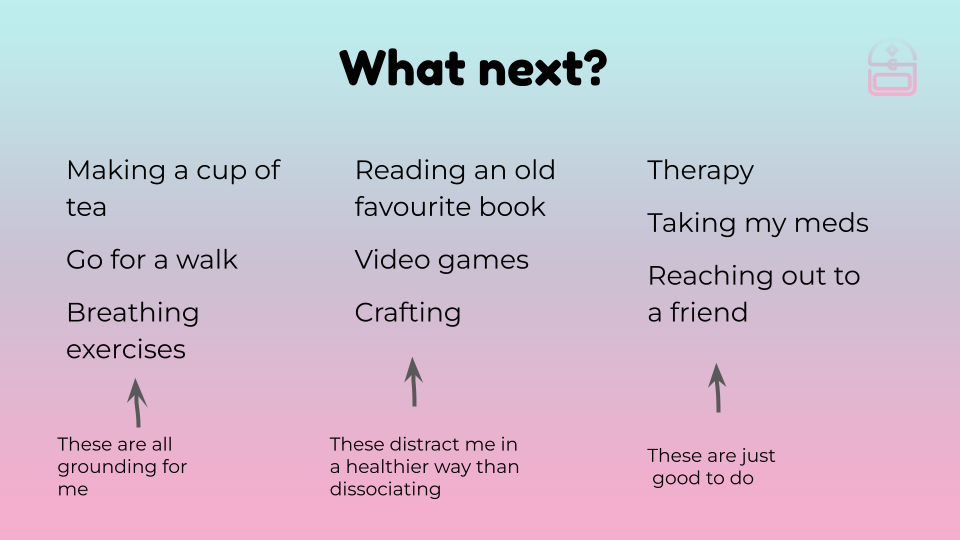What are your warning signs?
Plan for your bad days on a good day. It’s easier, and is a way to practice being kinder to yourself. By thinking about warning signs and what you can do to help or counter-act them, you reframe your warning signs to be messages from your body and mind that you can respond to. It becomes more neutral. You can also maybe catch yourself earlier in a downward spiral, making the recovery easier.
As always I like to make my things visible and also categorise them, and this is how I did it for warning signs.
Internal Warning Signs
Things that might not be noticeable to others, but I would notice them.

External Warning Signs
Things that other people may notice.

Then I can look at similarities and needs/wants for these things. A big theme throughout these is one of distraction and dissociation. I already knew this was a pattern in my life, and one I was trying to change. Now I could see in a bit more specific detail how these affected my life while I was struggling. The next step was to find a way to manage these in a way that made sense.

Some grounding exercisdes, better ways to distract myself if needed, and keeping on top of things that help are all ways I can manage my warning signs and hopefully up my self care before they get worse.
These aren’t the be all and end all of my symptoms, or ways I can respond to them. It also doesn’t mean I’m perfect at managing my health issues, especially when life gets in the way, but this was a useful exercise on multiple fronts.
As I mentioned at the start, this is a neutral observation. ‘This is a warning sign that something might be up with me’. It’s an information point, a place for reflection. It’s not a moral failing. This can help with self talk when we try to move from negativity, through neutralness, to kindness.
We’re also learning to be kind to ourselves when we’re struggling.
These are relatively low effort interventions. None of these are ‘make a new routine’ or ‘do more work’. That’s not to say you might end up realising you need to do something intensive, it’s more that starting with something small and simple can be easier to handle when you’re struggling. Small, concrete steps is the name of the game here.
This is also a way to get to know yourself better. It’ll be a bit difficult, as it means looking at yourself when you’re at your lowest or your most ‘worrying’ symptoms, and that’s difficult. You may have to tap out and not do the exercise, which is absolutely fine.
But it is a venue to get to know the sides of ourselves we’d rather not dwell on, and turn them into an opportunity for kindness, and that’s really important to do.
SCB is a fully reader supported newsletter, thank you so much for your support <3
Add a comment: